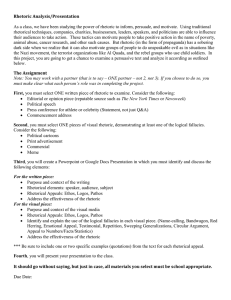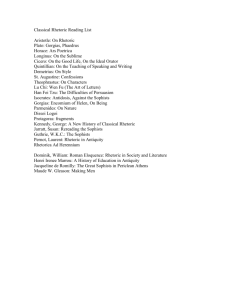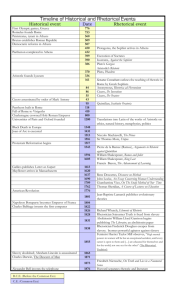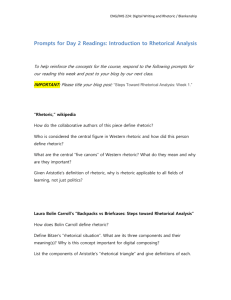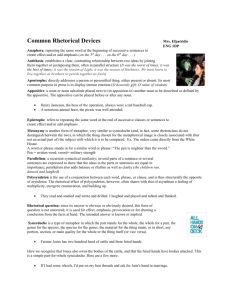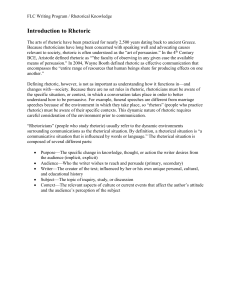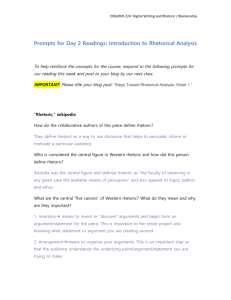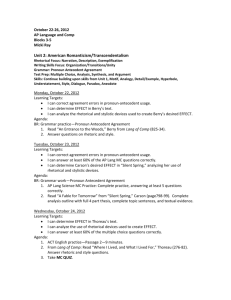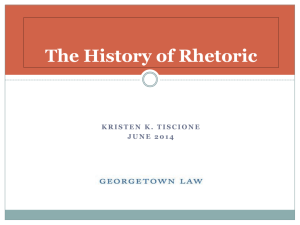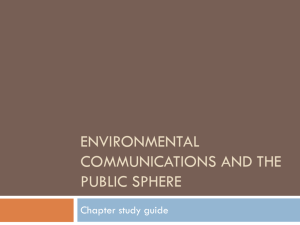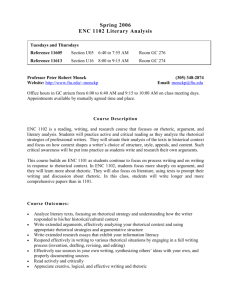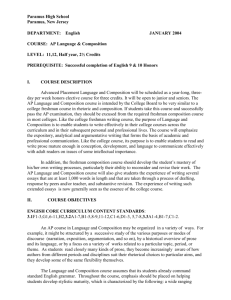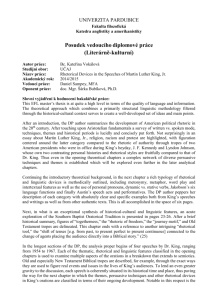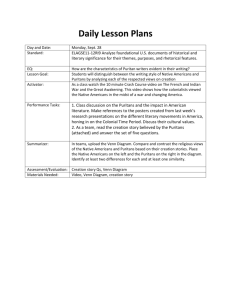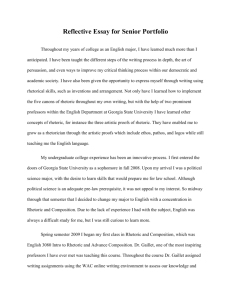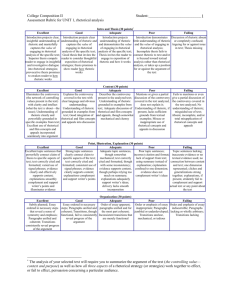Rhetoric as a method and object of historical study
advertisement
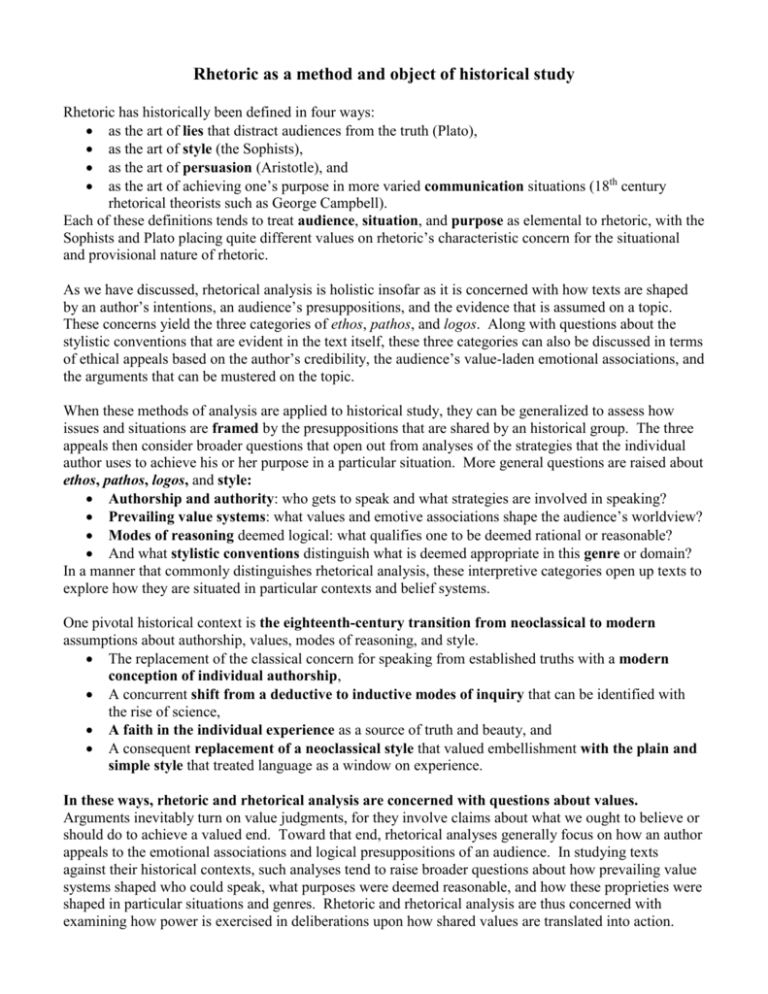
Rhetoric as a method and object of historical study Rhetoric has historically been defined in four ways: as the art of lies that distract audiences from the truth (Plato), as the art of style (the Sophists), as the art of persuasion (Aristotle), and as the art of achieving one’s purpose in more varied communication situations (18th century rhetorical theorists such as George Campbell). Each of these definitions tends to treat audience, situation, and purpose as elemental to rhetoric, with the Sophists and Plato placing quite different values on rhetoric’s characteristic concern for the situational and provisional nature of rhetoric. As we have discussed, rhetorical analysis is holistic insofar as it is concerned with how texts are shaped by an author’s intentions, an audience’s presuppositions, and the evidence that is assumed on a topic. These concerns yield the three categories of ethos, pathos, and logos. Along with questions about the stylistic conventions that are evident in the text itself, these three categories can also be discussed in terms of ethical appeals based on the author’s credibility, the audience’s value-laden emotional associations, and the arguments that can be mustered on the topic. When these methods of analysis are applied to historical study, they can be generalized to assess how issues and situations are framed by the presuppositions that are shared by an historical group. The three appeals then consider broader questions that open out from analyses of the strategies that the individual author uses to achieve his or her purpose in a particular situation. More general questions are raised about ethos, pathos, logos, and style: Authorship and authority: who gets to speak and what strategies are involved in speaking? Prevailing value systems: what values and emotive associations shape the audience’s worldview? Modes of reasoning deemed logical: what qualifies one to be deemed rational or reasonable? And what stylistic conventions distinguish what is deemed appropriate in this genre or domain? In a manner that commonly distinguishes rhetorical analysis, these interpretive categories open up texts to explore how they are situated in particular contexts and belief systems. One pivotal historical context is the eighteenth-century transition from neoclassical to modern assumptions about authorship, values, modes of reasoning, and style. The replacement of the classical concern for speaking from established truths with a modern conception of individual authorship, A concurrent shift from a deductive to inductive modes of inquiry that can be identified with the rise of science, A faith in the individual experience as a source of truth and beauty, and A consequent replacement of a neoclassical style that valued embellishment with the plain and simple style that treated language as a window on experience. In these ways, rhetoric and rhetorical analysis are concerned with questions about values. Arguments inevitably turn on value judgments, for they involve claims about what we ought to believe or should do to achieve a valued end. Toward that end, rhetorical analyses generally focus on how an author appeals to the emotional associations and logical presuppositions of an audience. In studying texts against their historical contexts, such analyses tend to raise broader questions about how prevailing value systems shaped who could speak, what purposes were deemed reasonable, and how these proprieties were shaped in particular situations and genres. Rhetoric and rhetorical analysis are thus concerned with examining how power is exercised in deliberations upon how shared values are translated into action.
